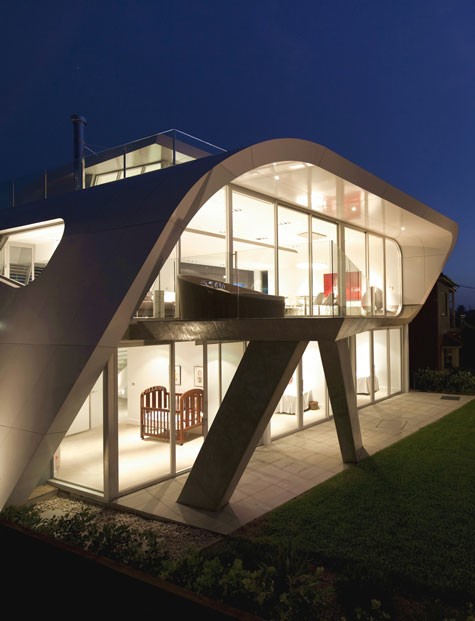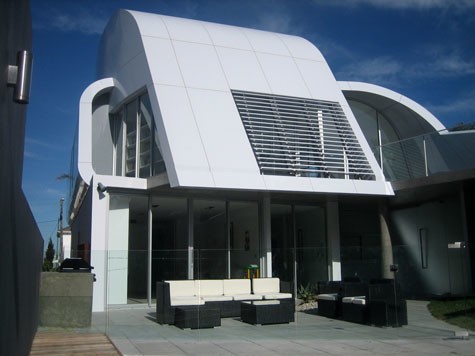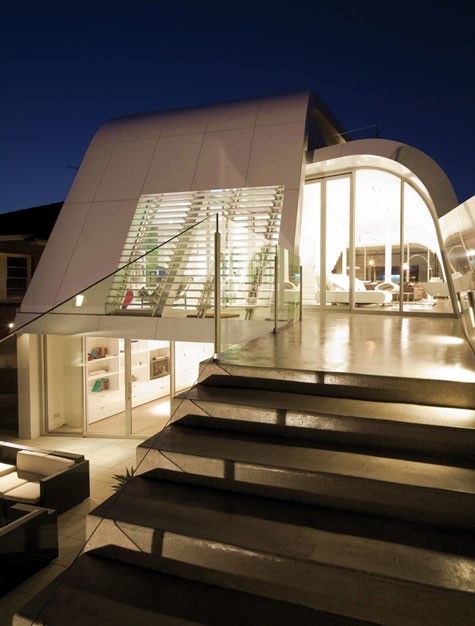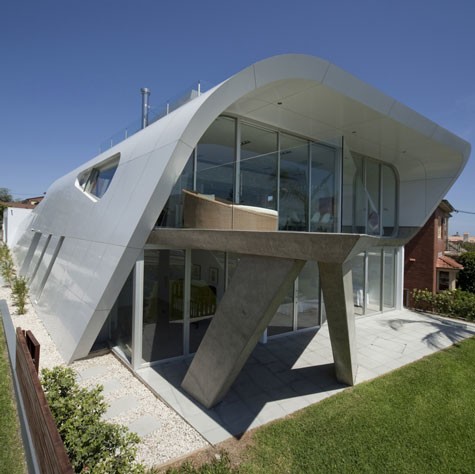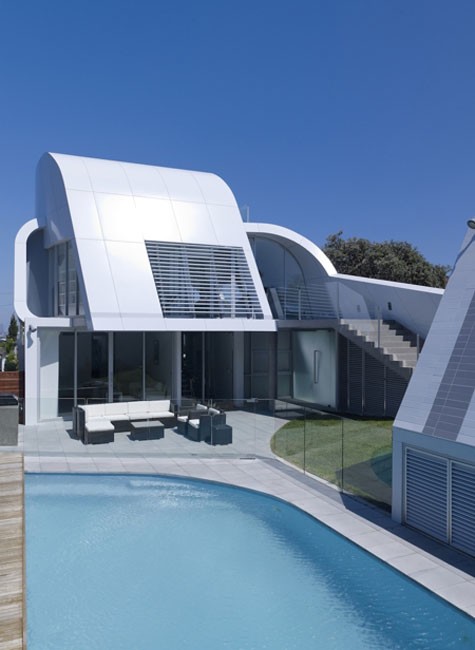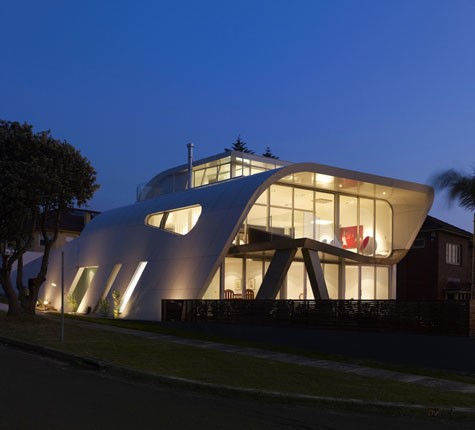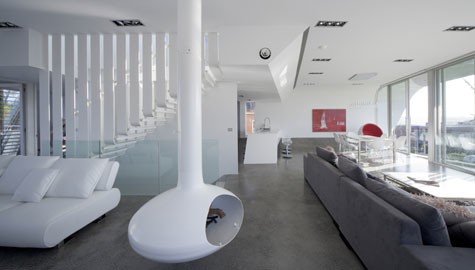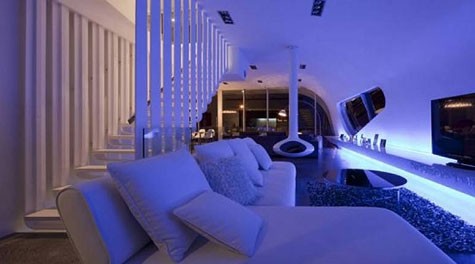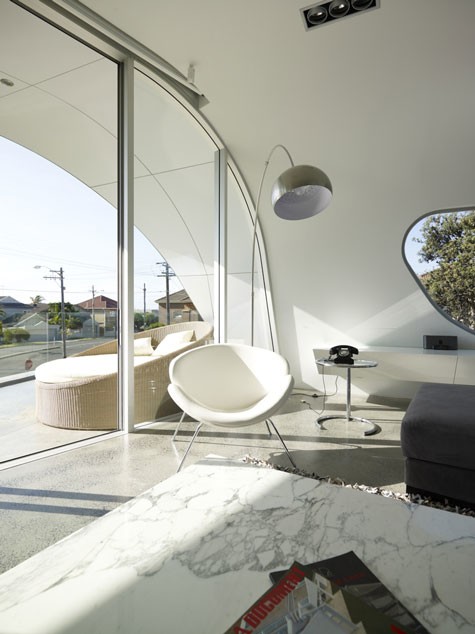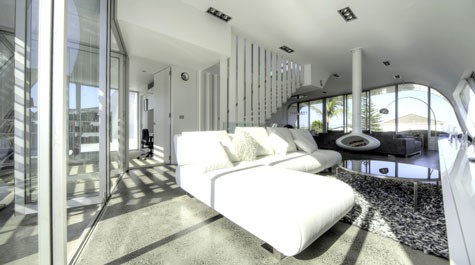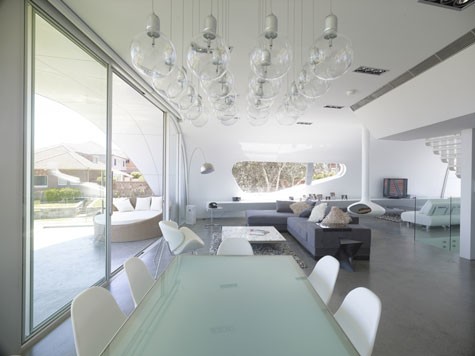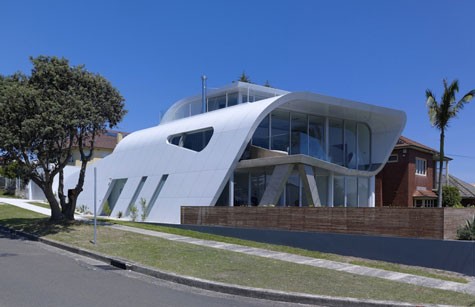
Constructing Tony Owen’s geometric habourside home was more like building a car than a house, the architect said.
The abstract shapes of Moebius House called for a completely new system of fabrication and assembly, Owens told Architecture & Design.
“Early on it became apparent that this house would have to be detailed and documented entirely in three dimensions,” he said. The steel frame house is clad in metal panels that were pre-cut in China, in a process resembling automotive assembly, Owens said.
With views of the Sydney Opera House and Harbour Bridge, this family home maximizes the light, space, ventilation and views of its tight site. “We are exploring a more environmentally sensitive form of design called ‘micro design’,” Owens said.
The practice used parametric modeling software that can respond to very small changes in design input criteria to capitalize on the site’s natural attributes and minimize overshadowing and the impact upon neighbours’ views.
“We started by responding to the site with a series of movements that folded and twisted the space in order to maximise the changes of level, view opportunities and potential for connectivity to outside spaces,” Owens said.
The team then created a dynamic model that was capable of responding to changes in these variables and allowed the models to run in real time.
“We then stopped the model when we felt we had a model which satisfied our concerns … The fluidity of space is a direct result of having a strong relationship with the surrounding landscape.”
